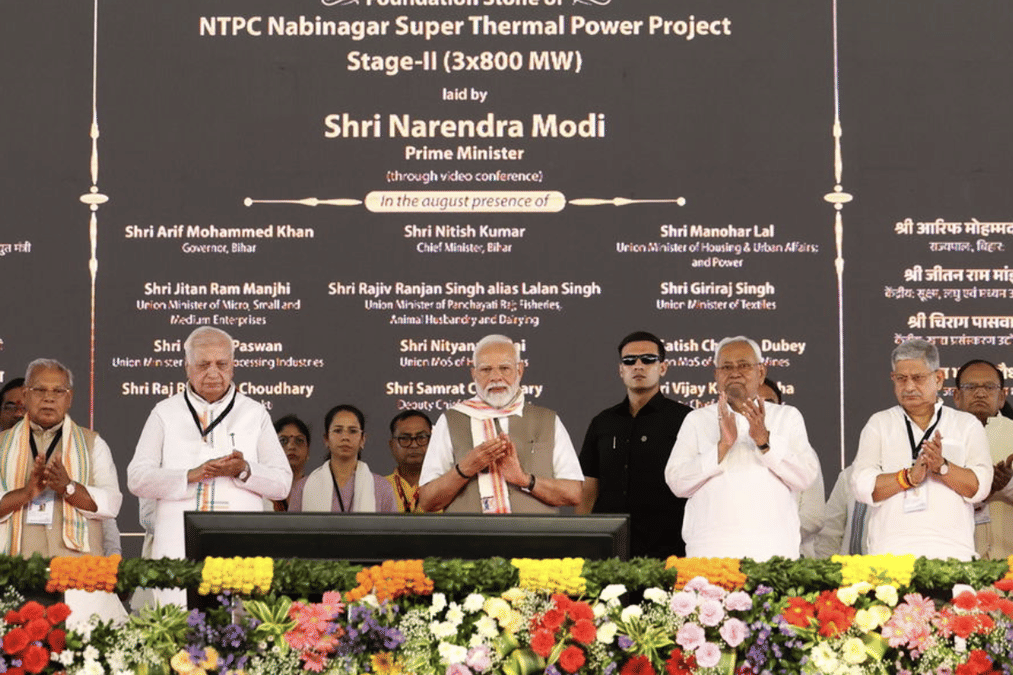Infrastructure has always been the backbone of economic and social development. In India, regional disparities in infrastructure and growth remain a persistent challenge, especially in eastern and northeastern states. These regions face:
- Difficult geography (mountains, forests, rivers, and international borders).
- Weak industrial base.
- High poverty rates and limited employment opportunities.
- Lack of adequate transportation and digital connectivity.
To address these gaps, Prime Minister Narendra Modi’s visit (13–15 September 2025) to Mizoram, Manipur, Assam, West Bengal, and Bihar marked a significant step. During this tour, projects worth ₹71,850 crore were inaugurated or launched, with special emphasis on transport and connectivity.
Major Announcements
- Transport Infrastructure
- Inauguration of 3 new express trains, connecting the Northeast with metropolitan hubs.
- Expansion of railway lines in hilly and remote regions to ensure faster and safer travel.
- Foundation laying of bridges and tunnels to overcome geographical challenges.
- Economic Development Projects
- Investment in roadways, industrial clusters, and regional trade hubs.
- Special focus on improving logistics corridors to reduce transport costs.
- Infrastructure support for agriculture supply chains to improve market access for farmers.
- Social & Regional Development
- Projects aimed at healthcare, education, and housing in semi-urban and rural pockets.
- Promotion of tourism in states like Mizoram and Manipur through better connectivity.
Significance of the Visit
1. Infrastructure Development
- Critical for Northeast: Improved transport will integrate the region with India’s economic mainstream.
- Job Creation: Large-scale construction will create employment opportunities both directly (labour) and indirectly (logistics, services).
- Multiplier Effect: Each ₹1 spent on infrastructure is estimated to generate ₹2.5–3 in economic activity (as per NITI Aayog estimates).
2. Strengthening Centre–State Relations
- The visit reflects cooperative federalism, where central projects are aligned with state needs.
- It also indicates the Centre’s commitment to reducing regional imbalances.
- Provides states with political and financial support to execute long-pending infrastructure demands.
3. Boost to Regional Growth
- Eastern & Northeastern states lag behind western and southern India in per capita income, industrialization, and urbanization.
- New projects will improve access to markets, attract private investment, and promote entrepreneurship.
- Tourism and cultural exchange will grow as travel becomes easier.
4. Connectivity and Security
- The Northeast shares borders with China, Myanmar, Bangladesh, Bhutan, making connectivity vital for border management and defence.
- Improved transport ensures quick mobilization of forces in case of emergencies.
- Better roads and railways strengthen India’s Act East Policy, enhancing trade with ASEAN nations.
Challenges in Implementation
- Geographical Barriers: Difficult terrain increases project cost and delays construction.
- Security Concerns: Insurgency and local unrest in parts of the Northeast may hinder progress.
- Environmental Issues: Large infrastructure projects may affect forests and biodiversity.
- Financial Sustainability: Ensuring that projects deliver long-term revenue and are not just capital-intensive showpieces.
- Local Participation: Without involving local communities, projects risk resistance or poor acceptance.
Broader Implications
- Economic: Lower logistics costs, better supply chains, and stronger trade linkages.
- Social: Improved access to education, health, and opportunities, reducing migration to other states.
- Political: Strengthens central government’s outreach in states where regional aspirations are strong.
- Strategic: Enhances India’s connectivity with Southeast Asia, supporting trade corridors like BIMSTEC and ASEAN linkages.
UPSC Relevance
- GS Paper 2 (Governance, Federalism): Centre–State cooperation, cooperative federalism, inclusive growth.
- GS Paper 3 (Infrastructure, Economy, Security): Transport networks, regional development, border security, Act East Policy.
- Essay Paper: “Bridging Regional Disparities through Infrastructure Development.”
- Prelims: Facts like ₹71,850 crore projects, 3 express trains, states visited.
Possible UPSC Questions
Mains
- Discuss the role of infrastructure development in bridging regional disparities in India, with reference to the Northeast.
- How does India’s Act East Policy benefit from improved connectivity in the Northeast?
- Critically analyse the challenges of executing large-scale infrastructure projects in geographically difficult regions.
Prelims
- Which five states were covered during PM Modi’s September 2025 infrastructure push?
- Approximate investment announced during the visit?
- Number of new express trains inaugurated?

